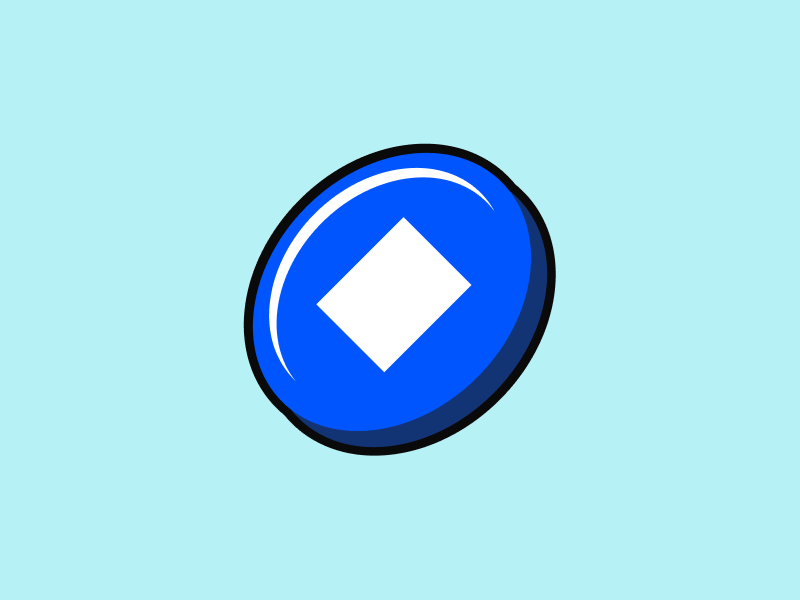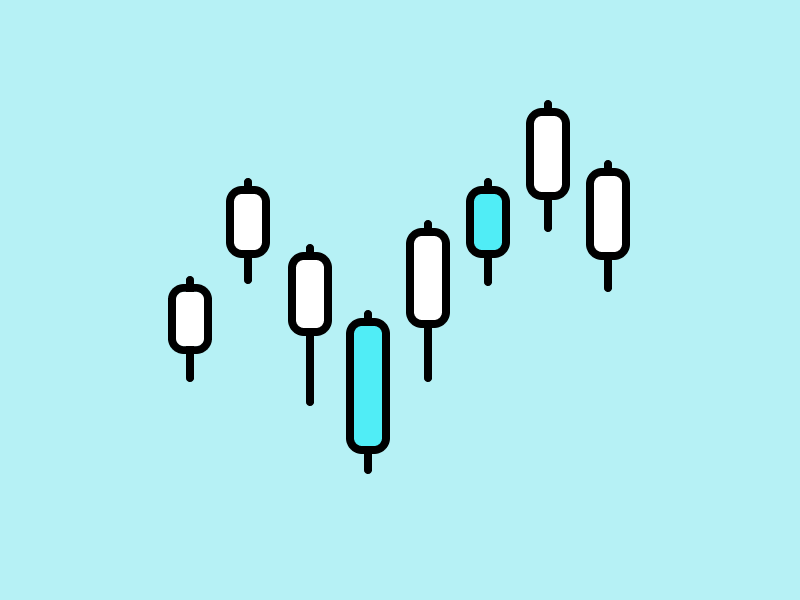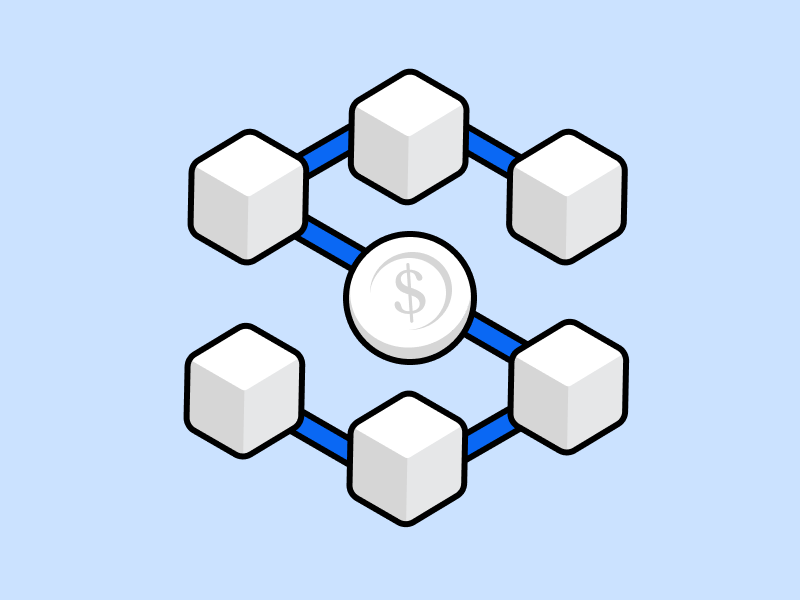What is a Dynamic NFT?

In the world of NFTs, a new trend called dynamic NFT (dNFT) has emerged. It offers the ability to change and provides a broader range of practical applications in everyday life. So, what exactly is a dynamic NFT, and how can it be utilized?
Article Summary
- 🖼️ Dynamic NFTs, also known as dNFTs, are a type of NFT that possess the ability to evolve and change based on external factors. These alterations typically involve modifications to the NFT’s metadata, which are automatically triggered by smart contracts.
- 🪙 Similar to traditional NFTs, dNFTs have a distinct token identity, but they differ in their dynamic metadata.
- 📄 The functionality of dNFTs relies on smart contracts and incorporates oracles to integrate external data into their NFTs.
- 🏀 One example of a dNFT is the dNFT of LaMelo Ball, an NBA professional basketball player. LaMelo’s dNFT avatars, specifically the Gold Evolve series, transformed when LaMelo won Rookie of the Year for the 2021 NBA season.
What is a Dynamic NFT?
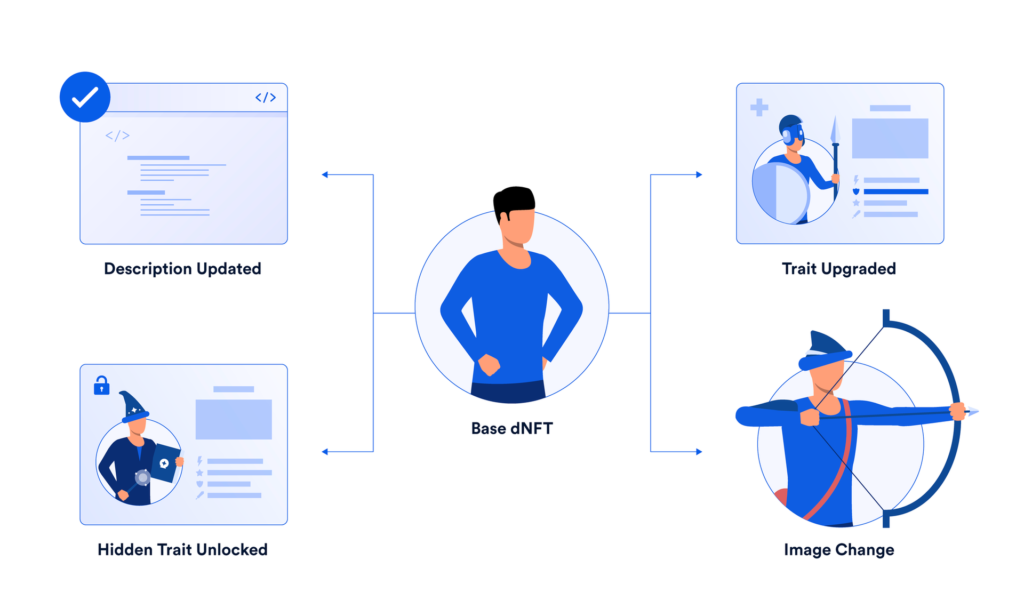
Before exploring further the concept of dynamic NFTs, let’s first understand what an NFT represents at a high level. Quoted from the Pintu Academy article What is an NFT (Non-Fungible Token)? NFT is a digital asset that represents a valuable item with a value that cannot be changed or exchanged. Each NFT has transaction record data on the blockchain. The data contains information on its creator, price, and ownership history. These NFTs are known as static NFTs because no one can change all the data recorded in the blockchain, including the metadata information.
In contrast to static NFTs, dynamic NFT or dNFT is an NFT that “live” and can change based on external conditions. It can respond to changes such as weather, match scores, asset price fluctuations, and others. These moving points often refer to changes in NFT metadata that are triggered by smart contracts automatically.
NFT metadata contains information that describes the characteristics of an NFT. Metadata can comprise the name, description, accessories, strength of an in-game hero, and other information.
dNFTs can update their content and appearance and interact with blockchain data based on real-world conditions. The owner or creator of a dNFT can change aspects of the NFT as needed. It opens up the potential for a more dynamic, interactive, and engaging digital experience for users.
dNFTs have a unique token identity like regular NFTs, but with dynamic metadata.
How Does Dynamic NFT Work?
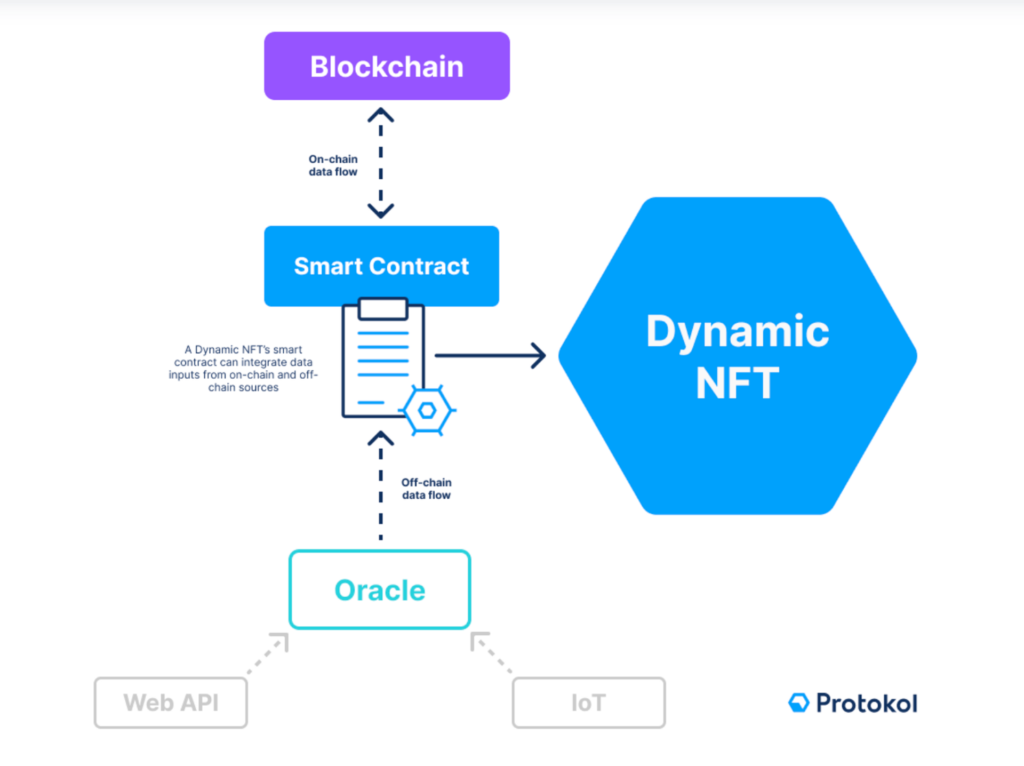
Just like regular NFTs, dNFTs work by utilizing smart contracts. In addition, dNFTs also use oracles to integrate external data into its NFT. Here is how a dNFT generally works:
- NFT Creation: A dNFT is created on a blockchain like Ethereum. The creator of the dNFT specifies the attributes and metadata associated with the NFT.
- Use of Smart Contracts: Smart contracts are essential to a dNFT. Smart contracts enable different functions and behaviors of an NFT. For example, smart contracts can manage metadata updates, change logic, and integrate oracles.
- Integration with Oracle: Oracles serve as a bridge between the real world and the blockchain. Oracles provide external data to the smart contract, such as price, weather, time, or other data. These Oracles give the necessary inputs to trigger changes in the dNFT.
- Metadata and Display Changes: dNFTs can update metadata and display based on predefined triggers, for example, in a dNFT avatar of a soccer player. When he scores a goal, the dNFT can update the accessory metadata of his avatar’s shoes and change the display of the shoes.
- Interaction with Owners: The owner can interact with the dNFT, for example, by controlling metadata updates or other settings through the user interface provided by the dNFT platform or protocol.
By combining smart contracts and oracles, dNFTs can adapt, change, and interact with real-time data and conditions in the real world. They create a more dynamic, interactive, and engaging NFT experience for owners and users.
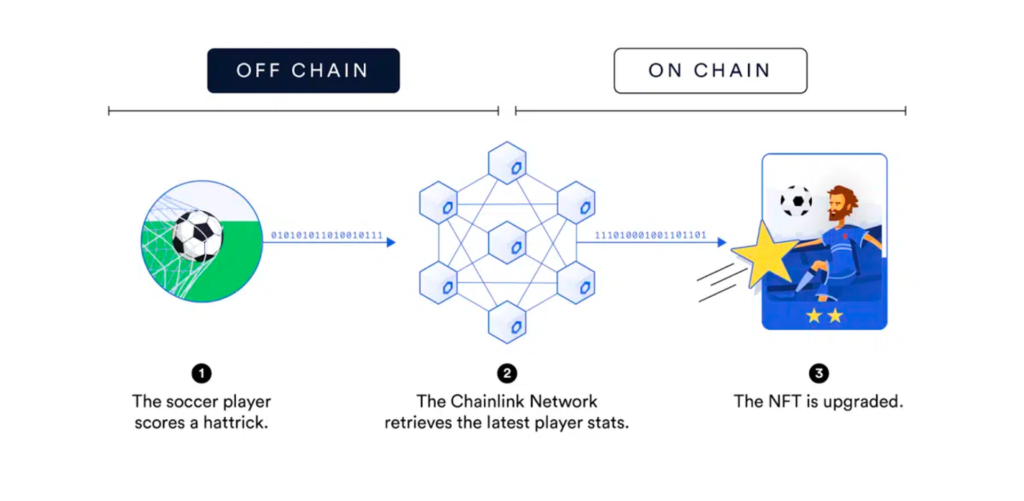
Difference between Dynamic NFT and Static NFT
Regular NFTs are static, meaning that the content and attributes of static NFTs remain unchanged over time. They do not respond to changing real-world conditions and cannot be updated. In contrast, dynamic NFTs are NFTs that have a dynamic behavior. They can change and update the content, attributes, or appearance of the NFT according to changes in the real world or inputs from external data sources.
In addition, another difference is the token standard used. Static NFTs are usually created using only the ERC-721 token standard, while dNFTs use both ERC-721 and ERC-1155 tokens. The ERC-1155 token standard is usually referred to as “semi-fungible” token. But along with the technology development, dNFTs may use other token standards to improve its functionality.
You can read more in this article to know the difference between ERC-721 and ERC-1155 standard tokens.
Examples of Dynamic NFT
LaMelo Ball NFT
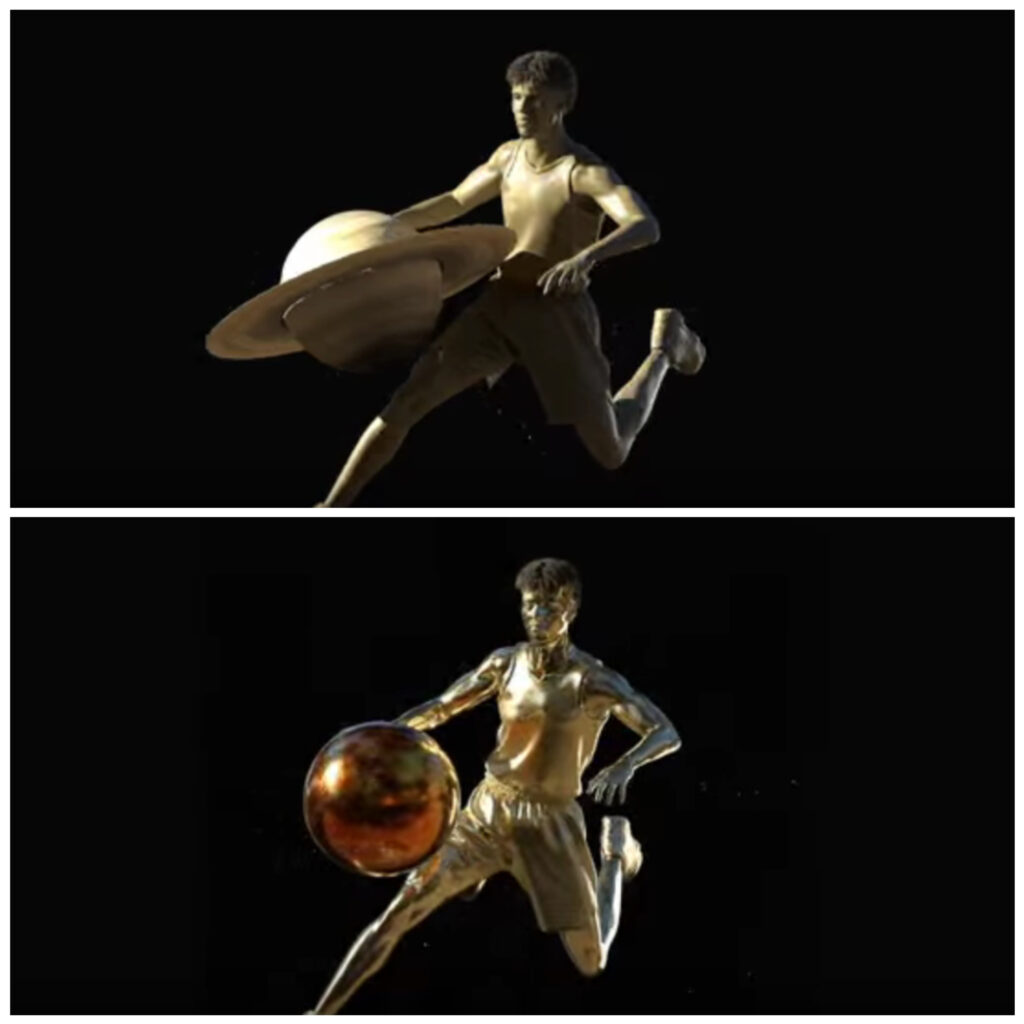
An example of a dNFT is the dNFT of LaMelo Ball, a professional NBA basketball player. His dNFT uses the Chainlink oracle to retrieve real-world sports data. LaMelo’s dNFT avatars, specifically the Gold Evolve series, will change if LaMelo wins Rookie of the Year for the 2021 NBA season. At first, LaMelo Ball’s dNFT avatar has a specific look. However, when LaMelo Ball won the Rookie of the Year title, his NFT evolved.
Artblocks
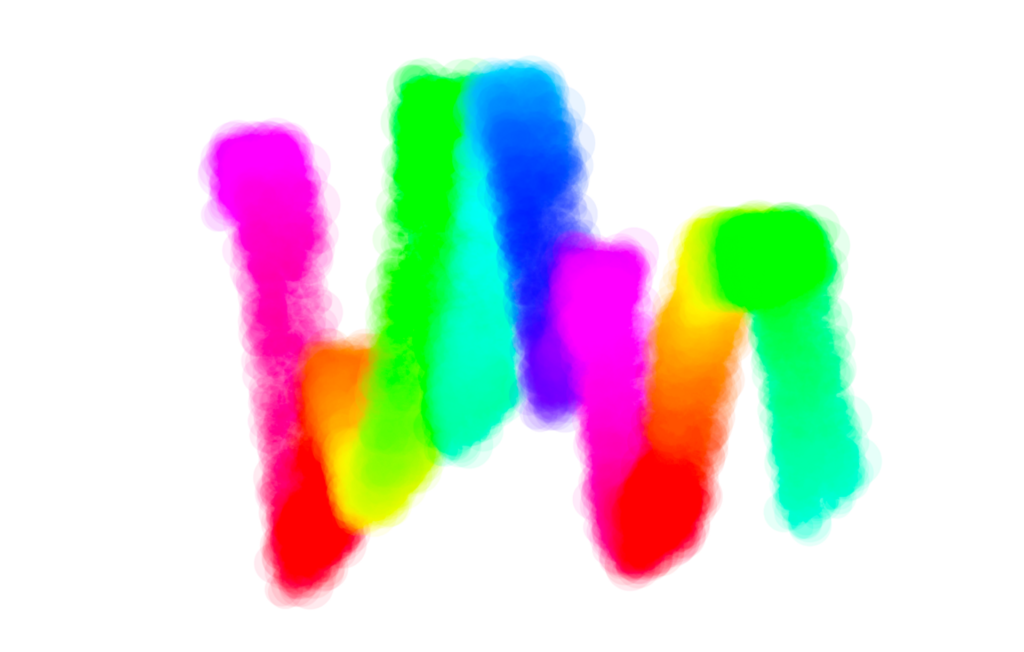
Artblocks is a Web3 platform for generative art that uses dynamic NFTs. Projects on Artblocks create generative artworks that change over time, utilizing dNFT features.
Cryptokitties
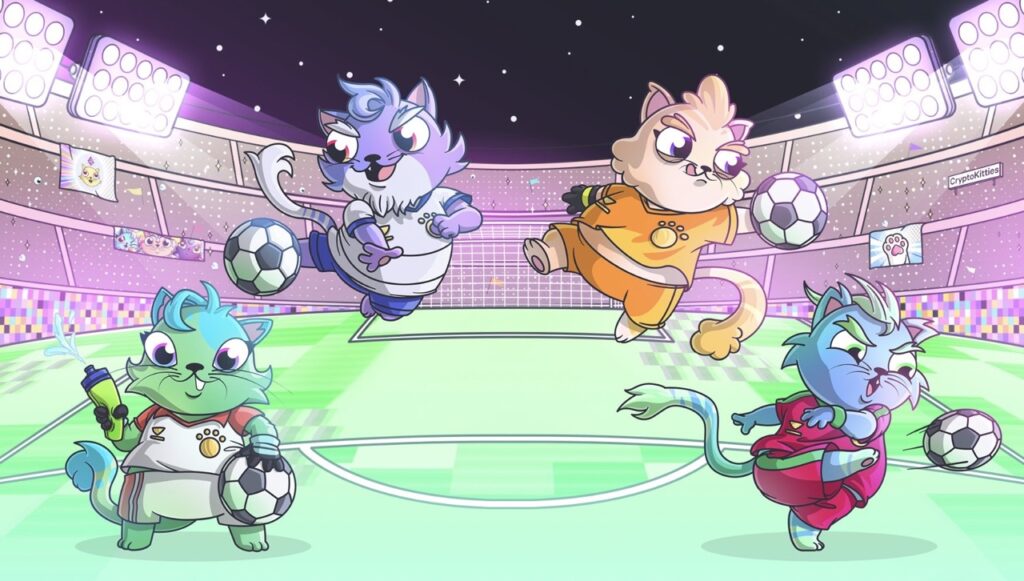
Cryptokitties is a popular example of dNFT in games. Cryptokitties is a game where players can buy, sell and breed digital cats represented by dNFTs. What makes Cryptokitties interesting is the dynamic capabilities of their NFTs. Each cat has attributes such as genes, personality, and appearance that the owner can update.
Dynamic NFT Use Cases
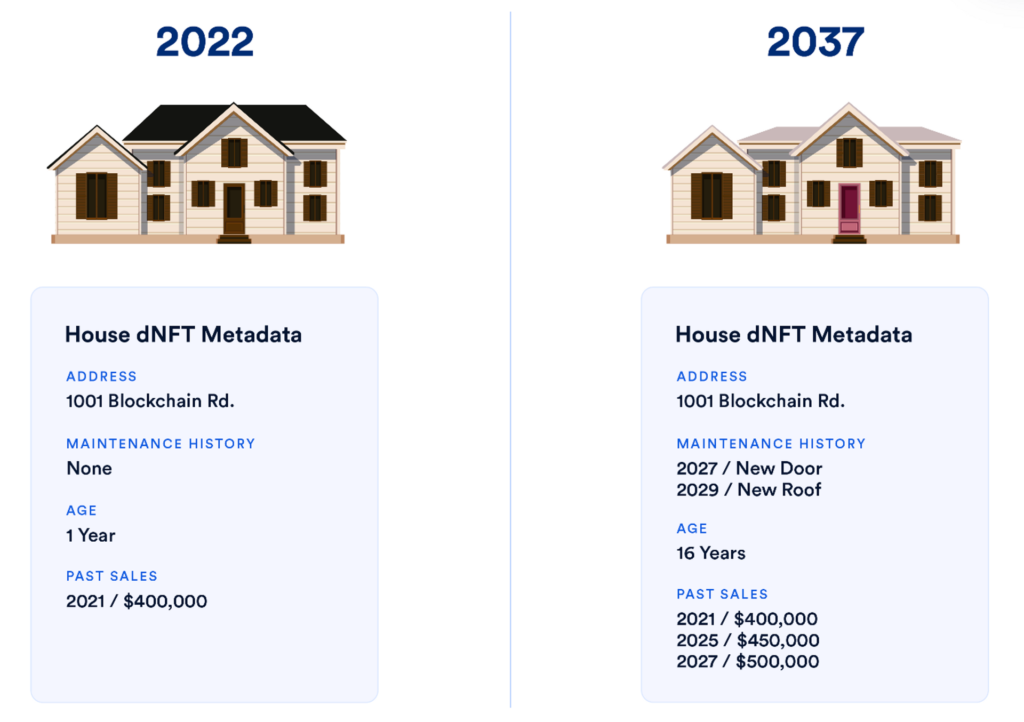
The use cases of dNFTs continue to expand as technology and blockchain adoption advance. Its potential use cases extend to various industries and provide flexibility in creating digital experiences that are more interactive, personalized, and change over time. Here are some of the fields that use dNFTs:
Real-World Assets
The creation of NFTs of real-world assets, such as property, can be complicated due to their changing values. To overcome this problem, dNFTs and oracles can help create a solution allowing real-time critical data updates. With dNFTs, real estate agents can keep updated records on maintenance, sales, and ownership. It will enable them to track property values continuously and ease the process for real estate investors in managing their portfolios.
Gaming
dNFT can be used in games and virtual worlds to create objects or characters that can change, evolve, or have unique abilities over time. For example, the dNFT of a player’s sword can change color as the player’s level increases.
Digital Identity
dNFT can create digital identities that can change or adapt over time, allowing for real-time personal data updates or certain statuses.
Conclusion
The future of the NFT market is entering an evolutionary phase with dNFTs. dNFTs are semi-fungible tokens that can be programmed to change metadata after they are created.
By combining blockchain technology with the ability to change and interact, dNFTs create new potential for creators, owners, and fans to engage in a more vibrant digital ecosystem.
References
- Evan, A Guide to Dynamic NFTs, NFT Evening, accessed 19 Juni 2023.
- Protokol Team, What are Dynamic NFTs? Protokol, accessed 19 Juni 2023.
- Chainlink Team, What Is a Dynamic NFT (dNFT)? Chainlink, accessed 19 Juni 2023.
- Air NFT Team, Understanding Dynamic NFTs: Use Cases and Examples, Air NFT, accessed 19 Juni 2023.
- Av. Elif Hilal Umucu, NFTs and Dynamic NFTs (dNFT) Guide 📚🗽 (all about NFT’s), Medium, accessed 19 Juni 2023.
Share
